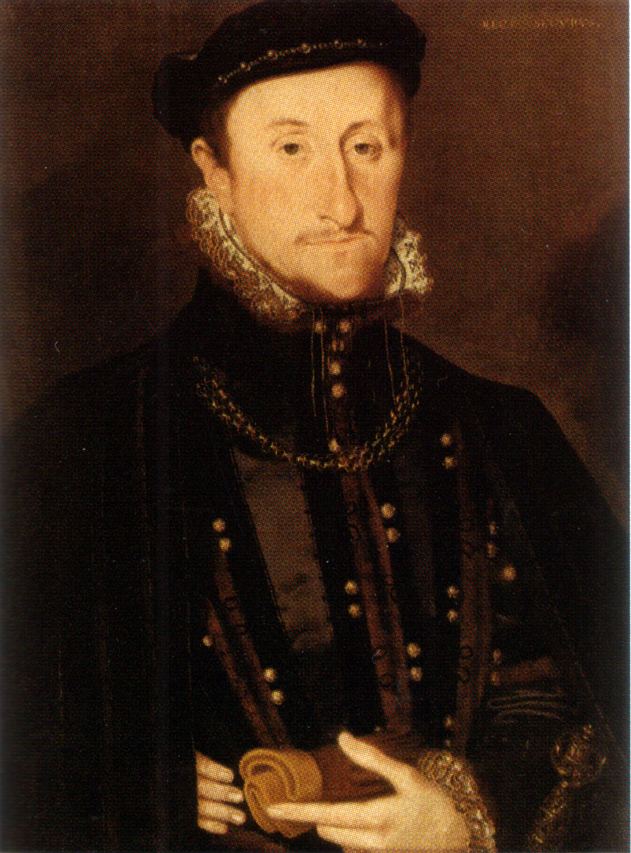Scotland Protestant rebels Unknown Unknown Result Victory for Mary | Unknown Unknown Date 1565 Location Scottish Lowlands | |
 | ||
Similar Battle of Corrichie, Marian civil war, Battle of Carberry Hill, Battle of Langside, Siege of Leith | ||
The Chaseabout Raid was a rebellion by James Stewart, 1st Earl of Moray against his half sister, Mary, Queen of Scots, on 26 August 1565, over her marriage to Henry Stuart, Lord Darnley. The rebels also claimed to be acting over other causes including bad governance, and religion in the name of the Scottish Reformation. As the government and rebel forces moved back and forth across Scotland without fighting, the conflict became known as the "chase about raid." Queen Mary's forces were superior and the rebel lords fled to England where Queen Elizabeth censured the leader.
Contents
Background
There were fears that her marriage to Darnley signaled a return to Roman Catholicism. Moray is reported to have declared that he aimed at nothing else than "the maintenance of the true religion."
Uprising
The rebels gathered in Ayrshire. Mary set out from Holyroodhouse to Linlithgow and Stirling on 26 August 1565 to move to Glasgow and confront them. Her cannon followed, brought by John Chisholm, who had obtained funds from the Burgh of Edinburgh after Mary promised the town rights over Leith. The treasurer of the Scottish exchequer, John Wishart of Pitarro, had sided with the rebellion and was replaced by William Murray of Tullibardine. The Provost of Edinburgh was also removed and Simon Preston of Craigmillar, a friend of Mary put in his place. William Murray's lands were raided by Highlanders. On 31 August, Moray and his supporters arrived in Edinburgh with 1,000 or 1,200 men. The English diplomat Thomas Randolph doubted that this force could withstand the Queen and King's army, as they lacked "harquebusiers," soldiers with hand-guns. Edinburgh Castle was held for the Queen and began to shoot its cannon at the rebels in the town.
The rebel lords left Edinburgh. Mary came back to Edinburgh in early September and retired to Stirling, then back to Glasgow. Moray's supporters retreated to Dumfries. On 10 September they sent Robert Melville to ask Elizabeth I of England for guns, money, troops, support from Lord Scrope at Carlisle, and naval assistance in the Forth. Thomas Randolph heard that Mary carried a pistol near Hamilton, and Darnley wore a "gylte corslet", while the rest of the army wore "jacks." By the 7 September Mary was back at Stirling. Moray and his followers contemplated making for Carlisle in England.
The English ship, The Aide captained by Anthony Jenkinson arrived in the Forth on 25 September, but was bombarded by the cannon on Inchkeith and returned to Berwick-upon-Tweed. Jenkynson intended to prevent Lord Seton bringing more munitions for Mary from France. Moray failed to gather significant support and the rebellion was easily crushed by Mary, forcing Moray to flee.
Moray in England
The rebels crossed the border at Carlisle, then made their way to Newcastle upon Tyne. Moray decided to go to London, and got as far as Royston in Hertfordshire, until he received a letter from Elizabeth I of England to stop as he was not invited and a rebel against his own queen. He was then brought to Westminster on 23 October 1565 to explain himself to Elizabeth and the French ambassadors.
Elizabeth said to him that "itt were no Prince's part to think well of your doinges, ... and, she wolde putt allso her helping hande too make them to understand the dutye which the subject owght to bear towarddes the Prynce." Moray declared he had not intended anything to the danger of Mary's person.
Moray stayed in England at Newcastle over the winter and returned to Scotland on 10 March 1566. Mary had summoned him for trial, and David Rizzio had just been murdered. Moray was reconciled with Mary and back on the Scottish Privy Council by 29 April 1566.
Complaints against Mary
The rebels justified their cause by listing their complaints against Mary and her rule, which were sent to England in the hope of gaining recognition and support. These included specific details of the finance of the Church of Scotland, and were, in summary;
